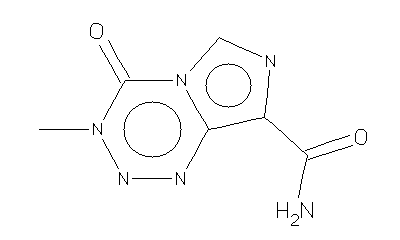During 1999, the Center for Drug Evaluation and Research (cder) at the U.S. Food and Drug Administration (FDA) took 190 actions on original new drug applications. Of these actions, 83 were drug approvals that occurred in a median time of 12 months. Twenty-eight of these approvals were for priority products that were considered to be of potentially exceptional public health value. These were approved in a median time of 6.1 months. The priority and regular approvals included 35 new molecular entities that had not been previously marketed in the United States and that were approved in a median time of 11.6 months. The new molecular entities are listed in Table 1.
The FDA approved 20 orphan drugs, biologics and devices in 1999 for the treatment of rare diseases with patient populations too small to make the development of such drugs and devices routinely profitable.
Cancer
Some significant approvals for the treatment or diagnosis of cancer include epirubicin (Ellence) for the treatment of early-stage breast cancer that has spread to the underarm lymph nodes and has been treated surgically with removal of all of the known tumor; temozolomide (Temodar) for the treatment of adults with a relapsed anaplastic astrocytoma, a form of brain cancer; and a new indication for docetaxel (Taxotere) as a treatment for non-small cell lung cancer that does not respond to cisplatin-based chemotherapy. In addition, CDER approved a drug/device using aminolevulinic acid (Levulan Kerastick) for the treatment of certain precancerous skin lesions. This is the first device of its kind.
The contribution of the Center for Biological Evaluation and Research to the fight against cancer was the approval of denileukin diftitox (Ontak), a biologic treatment for patients with advanced or recurrent cutaneous T-cell lymphoma who have not been helped by other treatments (Table 2). The Center for Devices and Radiological Health approved the TranScan T-Scan 2000, a new imaging device that will help radiologists determine if a woman should be evaluated further when her mammogram results are ambiguous.
From HIV to Obesity
Other important medications approved in 1999 include amprenavir (Agenerase), a protease inhibitor for the treatment of human immunodeficiency virus infection in children more than four years of age and adults; a combination of aspirin and dipyridamole (Aggrenox) that reduces the risk of a second stroke related to blood clots in the brain; levetiracetam (Keppra), an epilepsy drug that helps control partial-onset seizures in adults; Humate-P, a plasma-derived antihemophilic factor/von Willebrand factor complex as a new indication for the treatment of von Willebrand's disease; dalfopristin (Synercid), the first antibacterial agent to treat infections associated with vancomycin-resistant Enterococcus faecium; sirolimus (Rapamune), an immunosuppressant drug to prevent acute organ rejection in patients receiving kidney transplants; rofecoxib (Vioxx), a COX-2 inhibitor for the treatment of osteoarthritis, menstrual pain and other acute pain in adults; NovoSeven Coagulation Factor VIIa (recombinant) for the treatment of bleeding episodes in patients with hemophilia A or B with inhibitors to coagulation Factors VIII or IX; and orlistat (Xenical), a new lipase inhibitor for the treatment of obesity.
Hepatitis, Pneumonia, Lyme Disease
Patients with hepatitis, pneumonia and Lyme disease can be treated earlier and with greater assurance thanks to the following tests that were labeled in 1999: (1) the Hepatitis C Check, the first home test for the hepatitis C virus, and an improved supplemental test, the RIBA HCV 3.0 Strip Immunoblot Assay, to confirm screening test results for antibodies to the hepatitis C virus; (2) Binax NOW Streptococcus Pneumoniae Urinary Antigen test, a first-of-a-kind urine test for detecting Streptococcus pneumoniae; and (3) the PreVue B. burgdorferi Antibody Detection Assay, a simple new blood test for antibodies to Lyme disease that can be used in the office.
Influenza
Two new influenza medications, the first new treatments for this condition since 1993, were labeled last year: oseltamivir (Tamiflu), an oral antiviral medicine for adults whose influenza symptoms have lasted no more than two days; and zanamivir (Relenza), an inhaled antiviral medication for adults and adolescents more than 12 years of age who have uncomplicated influenza.
Myopia
Nearsighted patients can be helped by two new devices labeled by the FDA last year: KeraVision Intacs, which are tiny acrylic crescents that can be implanted in the eye to correct mild nearsightedness, and SVS Apex Plus Excimer Laser Workstation, an eye laser for use in correcting myopia, with or without astigmatism, in adults.
Diabetes
Patients with diabetes now have three more products to help manage the disease and improve their quality of life: pioglitazone (Actos) and rosiglitazone (Avandia), new drugs in the thiazolidinedione class for the treatment of type 2 diabetes (formerly known as non-insulin-dependent diabetes); and the Continuous Glucose Monitoring System, the first device that provides physicians with continuous measures of tissue glucose levels in adults through a sensor inserted under the skin and connected to a small external monitor.
Cardiac Conditions
Cardiac patients can benefit from several devices labeled by the FDA last year: the Ancure Tube and Bifurcated Endovascular Grafting Systems are designed to permit treatment of aortic aneurysms in the abdomen without major abdominal surgery; and the AngioJet System, which removes blood clots from blocked heart arteries or bypass grafts before angioplasty.
Also approved are the Eclipse TMR Holmium Laser System, a transmyocardial revascularization system that creates tiny holes in the heart muscle in areas inaccessible to treatment by coronary artery bypass; the Cardioseal Septal Occlusion System, a transvascular method of closing holes between the left and right sides of the heart for use in a selected population; and the Ensite 3000 and the Tracer 02T-W Mapping Device, two mapping systems for diagnosing complex atrial arrhythmias to assist in planning appropriate treatment.
Thomas J. McGinnis, R.Ph., is Director of Pharmacy Affairs in the Office of Policy for the U.S. Food and Drug Administration.
COPYRIGHT 2000 American Academy of Family Physicians
COPYRIGHT 2000 Gale Group



